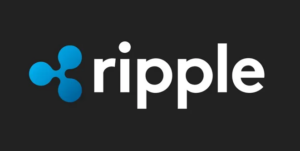Crypto Traders Exercise Caution Amid Bitcoin and Ether Downside Risks; SOL Emerges as Standout
Options data is indicating a preference for short-term puts, or bearish positions, in bitcoin and ether, reflecting cautious sentiment as a Federal Reserve interest-rate cut looms. Despite this, SOL is expected to exhibit more resilience compared to ether.
The prices of the two major cryptocurrencies, bitcoin (BTC) and ether (ETH), have surged nearly 10% from Friday’s lows, supported by positive signals from critical order book metrics and anticipation of an upcoming Federal Reserve interest-rate cut.
Traders are apprehensive about potential near-term weaknesses in prices, as indicated by options-based risk reversals associated with bitcoin and ether. A positive risk reversal signifies that call options are more costly than puts, indicating bullish market sentiment, while a negative value suggests the opposite. Call options enable buyers to benefit from or hedge against price increases, while puts offer protection against downside risks.
According to analysis from Singapore-based QCP Capital, there is a bias for puts in options trading on Deribit, reflecting market caution regarding downside risks following the recent market dip.
Traders turned to put options on Friday following concerns over a weak U.S. nonfarm payrolls (NFP) report, reigniting worries about a potential recession and prompting risk aversion in financial markets. Market participants are wary that BTC may drop to $50,000 or even $40,000, with the cryptocurrency currently priced around $57,000.
Historical data suggests that recessions and risk aversion typically follow the initiation of a Fed rate-cutting cycle, with the central bank widely expected to reduce rates by 25 basis points in the upcoming week.
Alex Kuptsikevich, senior analyst at The FxPro, anticipates that price rallies may be short-lived until the Fed meeting, with a prevailing cautious approach in the market until the release of U.S. inflation data and the Fed’s interest rate decision.
SOL is projected to maintain relatively strong performance compared to ether in the short term. SOL’s one-month options skew, a measure of demand for calls versus puts, recently surpassed zero, while ether’s one-month skew remained near -2%, indicating a preference for put options.
Kristian Haralampiev, structured products lead at Nexo, noted that traders are actively safeguarding against downside risks in Ethereum while showing interest in the upside potential of Solana, illustrating a market hedging strategy.
In conclusion, the cryptocurrency market remains cautious amid uncertainties surrounding the Fed’s upcoming decisions and economic indicators, with traders closely monitoring options data for insights into potential price movements.






